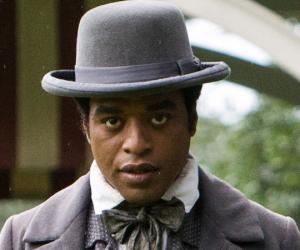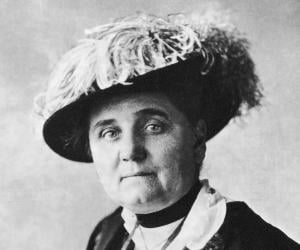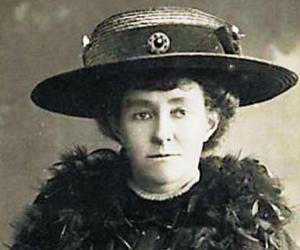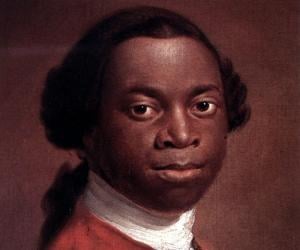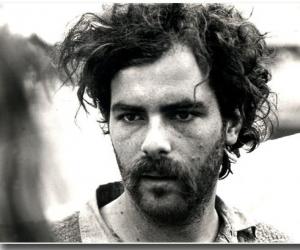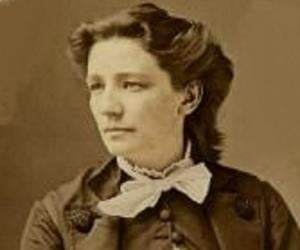Quick Facts
Died At Age: 55
Family:
Spouse/Ex-: Anne Hampton (m. 1829)
father: Mintus Northup
children: Alonzo Northup, Elizabeth Northup, Margaret Northup
Human Rights Activists American Men
Died on: 1863
U.S. State: New Yorkers
Childhood & Early Life
Solomon Northup’s birth date has been debated but a large chunk of historians believe it to be 10th July 1807, while many claim it was 1808. He was born to a freed black man named Mintus, who was the slave to the Northup family back in the days. He eventually gained his freedom and married another black woman and started his family.
Both Solomon and Joseph, Mintus Northup’s sons were born free as their mother was also a freed woman. The family did farming while Solomon gained an early interest in music, particularly in playing violin. Mintus legally owned a chunk of land and led a sufficiently good life despite being a former slave and fighting the racial discrimination that prevailed in the society.
Mintus took advantage of relatively liberal laws in New York and apart from managing to own a land of his own, he registered for the voting rights as well. He provided good enough education for both his sons, which wasn’t a norm back in the days even in the liberated parts of the country such as New York. Mintus and both of his sons worked in the farm with him and the family led a happy and content life for long until the tragedy struck them.
Solomon married Anne Hampton, a multi-racial partly black woman on 25th December 1929 and the couple gave birth to three children, Alonzo, Margaret and Elizabeth.
After the death of his father in 1829, Solomon went about doing many jobs. He worked as a raftsman and a fiddler. He played really good fiddle and was usually called upon in the elite parties to showcase his talent. The family then moved to Saratoga Springs for better career opportunities after selling their family farm. Solomon’s wife was a professional cook.
It was difficult initially for Solomon and Anne to make the ends meet. But Solomon being an in-demand musician cum a skilled carpenter and Anne being a respectable cook, the family did just fine for themselves.
The Kidnapping & Slavery
Solomon’s reputation as a skilled fiddler was getting bigger by each passing day, but New York didn’t seem like an ideal place to make the full out of his musical talents. In the March of 1841 when he was 32 years old, he met two men who claimed to be working in a circus and told Solomon that they were hugely inspired by his talent and wanted him to work with them in Washington D.C.
Washington was a place where the slavery was going at its brutal best and Solomon left New York without notifying his wife Anne. The men claimed that it was a brief gig and the pay was good enough along with the money to make journey to DC and back. Solomon brought with himself the papers of his identification as a freedman as he was rightly apprehensive about moving to a place which had the largest slave market in the country.
It turned out to be an unfortunate decision on Solomon’s part to trust these two men as on route, he was drugged, beaten and sold into slavery in Louisiana. He was beaten very badly and threatened to not speak of his status as a free man. During the sales negotiations, his captors told the buyers that he was from Georgia. On his way to the slave market, he managed to persuade the English Sailor to send a letter to Henry Northup, the son of former owner of his father. Henry didn’t know exact location of Solomon and hence he couldn’t do anything.
Solomon was then sold in the New Orleans slave market to William Prince Ford, who ran a little farm in Louisiana. Regarding William, Solomon wrote that Ford was one of the noblest white men he ever encountered. Ford’s narrow mindedness about slavery was a result of his surroundings and associations with certain people.
Northup put his carpentry skills to a great use in Ford’s farm and felt appreciated for his talents. But Ford couldn’t afford many slaves on his farm and sold them off, with Solomon getting purchased by John M. Tibaut. Tibuat was a bad man and tried to humiliate Solomon on several occasions and when Solomon fought back, he tried to even kill him. Ford, his previous owner, saved him. Tibaut then sold Solomon to Edwin Epps, who then held Solomon for the next 10 years.
In 1852, a Canadian man Samuel Brass came to work at Epps’ plantation and befriended Solomon. He was the first person that Solomon told his true story and name to and asked for help. Samuel went out of his way to help Solomon and contacted his friends and relatives in Saratoga Springs. Henry Northup came down south and finally freed Solomon referencing the New York state laws.
Freedom & Legacy
In the same year that he got released, Solomon Northup wrote down his experiences in a memoir called ’12 Years a Slave.’ The write-up was known for its detailed and thought provoking writing style and became one of the most important documents aiding the abolitionist movement. It also inspired several black leaders to bring their fight against slavery to the next level.
Northup then rejoined his wife and children in New York and continued working as a carpenter. He had become a famous man and the face of a new era in American history, where the evil practice of slavery was dragging its final breaths. He gave more than two dozen lectures across the north-eastern United States and also helped many slaves to abandon their masters and flee to Canada.
He continued his work towards the abolitionist movement and got disappeared from public life suddenly in 1857 and it is believed widely that he died around 1863. Sadly enough, he couldn’t see his country where Africans-Americas were considered equal to the whites in social status.
Since his death, several writers and filmmakers have tried to adapt his story into their works. One of the most accomplished of them is the film ’12 Years a Slave’ , directed by Steve McQueen, a British director. Solomon’s memoir was reprinted and republished in 1869, a few years after his demise. ‘Solomon Northup Day: A Celebration of Freedom’ is being celebrated annually in Saratoga Springs in honour of Solomon.
Facts About Solomon Northup
Solomon Northup was a skilled violinist and often entertained fellow enslaved individuals and plantation owners with his music.
Despite the hardships he faced as a free man abducted into slavery, Northup maintained his dignity and resilience throughout his ordeal.
Northup’s narrative, “Twelve Years a Slave,” provided a firsthand account of the brutality of slavery and played a significant role in raising awareness about the institution.
After regaining his freedom, Northup became an abolitionist and advocated for the end of slavery, working to support the cause of freedom for others.
Northup’s legacy serves as a powerful reminder of the strength and courage of those who fought against the injustices of slavery.
See more:


